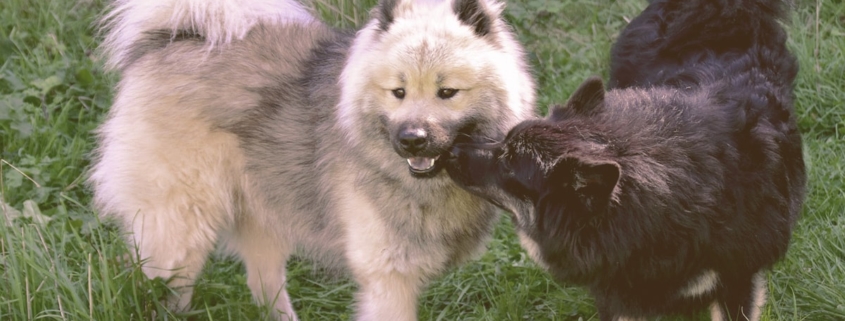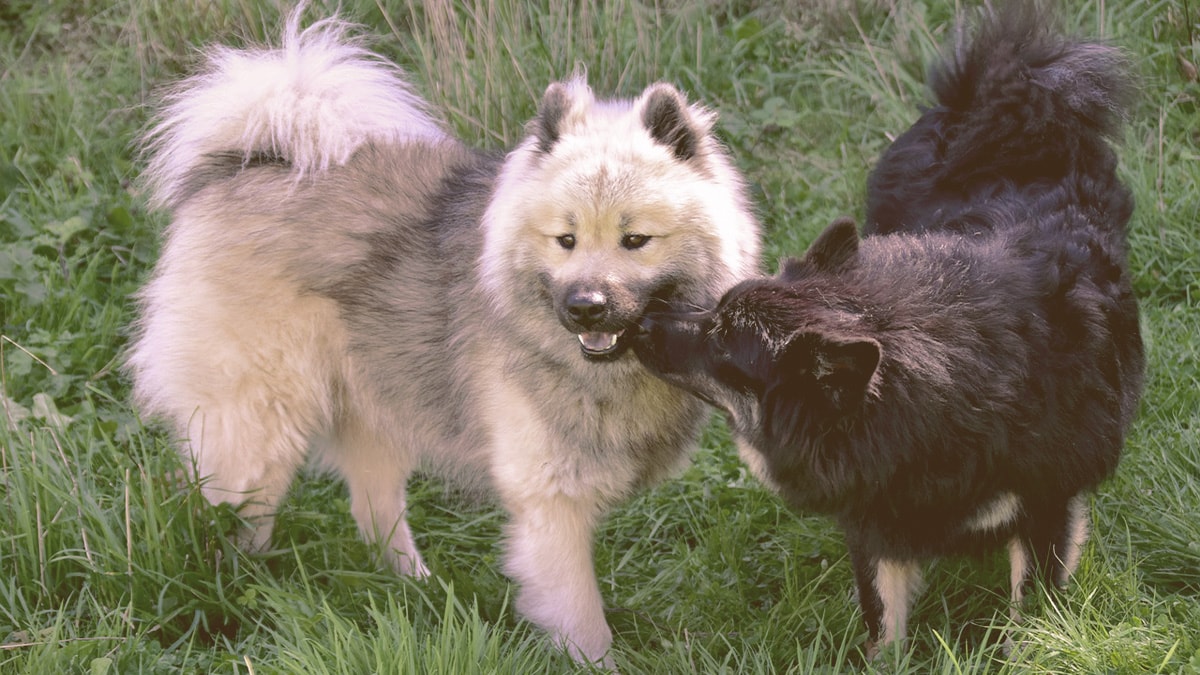
How To Stud Your Dog: The Complete Guide
Alex Vicente • Updated on August 1, 2023
- This review contains affiliate links. Read more here.
- Not a substitute for professional veterinary help.
If you decide to make a move from pet owner to pet breeder, there are a few things you need to know.
The first thing any dog breeder will tell you is that mating your animal is not an easy task at all.
There is quite a bit of preparation, forethought, and general practices that go into the process.
Many believe it is as simple as introducing a male and female dog and letting nature take its course, but the professional breeder rarely operates in that manner.
This type of mating has far too many consequences and some may be detrimental to your stud dog.
Table of Contents
The Controversy Over Stud Mating
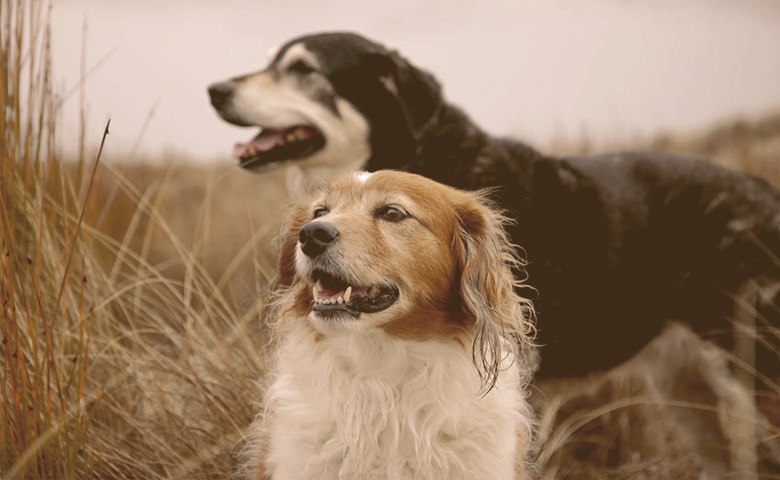
Even in the scenario of leaving indiscriminate choices of male and female dogs in pens to mate, you need to understand the controversies and the basics of stud mating in general. The more you know upfront, the better your mating chances are.
At the beginning of your mating adventure, you might decide to bring your dog to a professional breeder. If your dog is a crossbreed, you may soon discover there are controversies on crossbreeding animals. During the journey to mate your stud, you will hear two trains of thought.
Most experienced breeders side with breeding only pure-blood breeds. These professionals will argue it is impossible to determine the genetic output of mating your stud since it classifies as a mutt. They will warn of producing a dog of undeterminable size, temperament, or health issues.
Other pros maintain that spending years of inbreeding or grading up pure-blood dogs weakens the health of animals and outbreeding helps to invigorate the dog’s overall genetic makeup. After a serious investigation, you will discover the advantages and disadvantages of either approach.
Other resources that you may be interested in:
- The Best Harness for a French Bulldog: Everything You Need To Know
- English Bulldog Pitbull Mix: The Ultimate Guide
Mating Your Stud Dog Yourself
Should you tire of listening to the point-counterpoint arguments from the professionals, you may want to take matters into your own hands. You may have already thought about mating your stud dog being a lucrative financial prospect.
Keep in mind that money is not the only thing to consider when breeding your stud. You need to determine what type of offspring you intend to produce, which requires a realistic approach to a dog breeding program.
Start asking yourself questions such as:
- How do you want your puppy brood to look, or what kind of traits should they have?
- Do you want to mate your stud dog to improve the species of your line of dog?
- Is this decision to breed your stud dog entirely driven by financial motivation, or are there other reasons you have chosen to mate your dog?
You could introduce a random choice of a female partner for your stud and let nature take its course. Be aware that if you decide to let your stud dog mate in this manner, you will typically experience unpredictable results. Sometimes, these experiences may prohibit your stud dog from ever mating again.
The Basics of Mating Your Stud
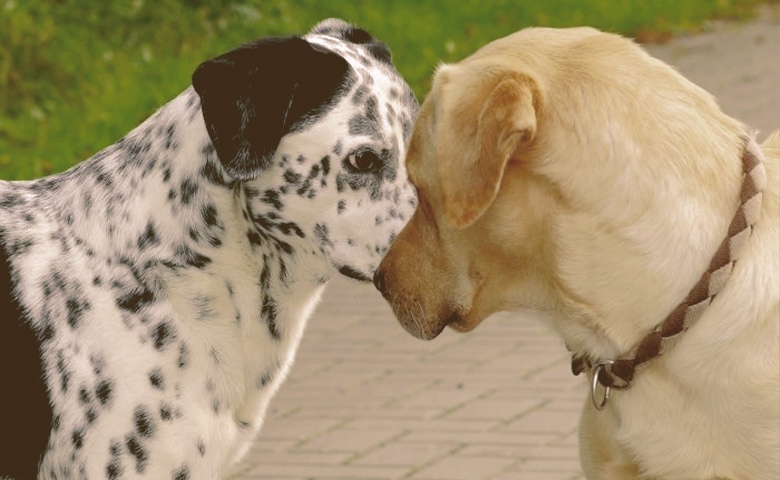
Remember, nature isn’t always perfect. If you are looking for a more controlled methodology to mate your stud, then continue reading. You need to know whether your stud is the offspring of mixed or out crossed animals or a purebred at the onset of your mating efforts.
Think of it this way: if your stud dog is a mixed breed, the stud’s parents quite probably were not the same species of dog. Both male and female parents possessed different sets of genes and hereditary traits they adopted from their parents.
As complicated a scenario as mating your stud dog already is, mating outbred or mixed animals has its own set of unique challenges. If you intend to breed your stud, you first need to take a step back and examine the parents’ genetic hereditary.
Understanding how the parents influenced the litter from which your stud originated will help you choose the right partner for your dog. It will provide an initial preview of what to expect from the litter. By studying the lineage, you will have a better overview of what results to expect.
Stud Dog Gene Pools
Unlike pure-blood mating, where both male and female dogs come from identical gene pools, it gets more complicated if your stud is of a mixed breed variety. If your stud is a montage of different genetic hereditary combinations, it may make it harder to control the output. The more you know about your dog’s lineage, the better control you have.
Another fundamental point you need to understand is that breeders of a cross or outbred dog do so with the intent of serving a particular purpose. It could be to breed out physical deficiencies or to derive a specific look or trait.
- Some mixed breeds will have unique skills, while other species help resolve allergic reactions of the pet owner.
- Outbred dogs such as a Labradoodle and Cockapoo are classic examples of breeding hypoallergenic types of dogs.
Regardless of whether your stud dog is a purebred animal with proper certification or a mixed mutt, keep this in mind. Mating your stud dog may introduce a brand new species. As many demands as pet owners may have, breeders consistently breed to fulfill the requirements.
The Science of Mating Your Stud Dog
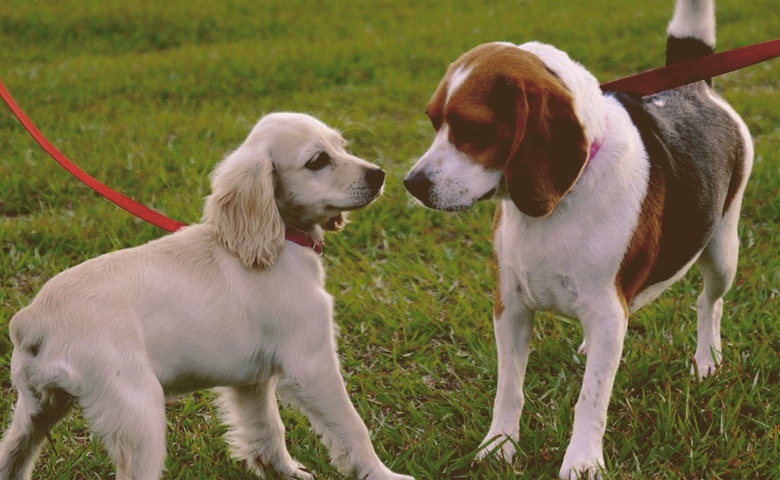
Mating your stud dog does not require you to be a scientist, but breeding your dog requires rudimentary familiarization with particular scientific genetics, such as basic DNA, Chromosomes, and genes.
If you intend to pursue mating your stud as a business, this is an important aspect. Successful breeding of your stud dog will require a decent understanding of dominant or recessive genes to know what traits the offspring will have at birth.
Also, you will need a thorough knowledge of all the genes in a dog line’s population. Think of all of this genetic knowledge as your recipe or blueprint for a successful outcome. If this type of selective breeding interests you and you would like to take it further, try taking a master breeding class. There are several available on the market.
A Contract for Your Stud Dog’s Service
A contract between you and the client is essential to complete before the mating process begins. As the stud’s owner, you must ensure everything is in this agreement, from stud fees to possession of pups from the resulting litter as payment.
Most of today’s breeding contracts include the below essential items. Be as specific as possible for each section as you need to satisfy both you and the female dog’s owner. The more detailed the contract, the better your chances.
- Complete information for both the sire and the dam – This consists of the registered name and the call name of your dog, ISWS Registration number, and Orthopedic Foundation for Animals if available.
- The names of both dog owners
- Stud fee and terms and conditions of payment
- Agreement of what constitutes a litter – most standard stud mating contracts define a litter as two or more live pups.
- Frequency of mating sessions before the contract terminates
Essential Contract Items Before Mating Your Stud
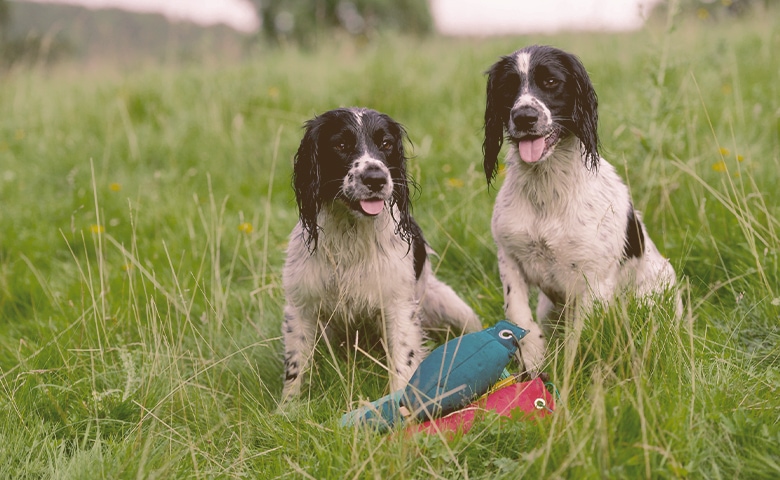
Your stud service contract can be as detailed or as slim as you need. Still, it is best to include the following three items to round out your arrangement and protect against confusion, disagreements, and possible litigation.
- Reasons for contract nullification – A classic example of this is if the female pet owner chooses to mate their dog with another stud while your agreement is in place.
- Activities both you and the female dog owner agree to perform – can include providing ISWS Registry or OFA certifications, clear Brucellosis screening, and original deposit or down payment amounts.
- Terms and conditions on the mating sessions themselves, transport requirements, and which party is specifically responsible for all costs associated with the process.
If you are unsure how to produce your stud contract, you can find multiple examples to use as a guide after a quick search on the internet. Pick a template that works for your mating intentions and expected results.
Knowing When to Mate Your Stud Dog
Female dogs typically reach breeding maturity when they are about six to eight months of age. With smaller breeds, the dam may get their first estrus or come into heat earlier. Once the female dog is in heat, the dog is ready for your stud dog’s attention.
While female dogs have a limited time frame during their life to successfully breed healthy litters, your stud can produce even as a senior dog. The problem is that as your stud gets older, it is more difficult for him to tackle the requirements of impregnating the female.
You may want to consider retiring your stud after ten years if he’s a larger dog. For smaller stud dogs, most breeders halt the breeding process after seven years of age. The retirement age of your stud dog is not locked in stone. It will be up to you, the owner, to decide.
First Mating of Your Stud
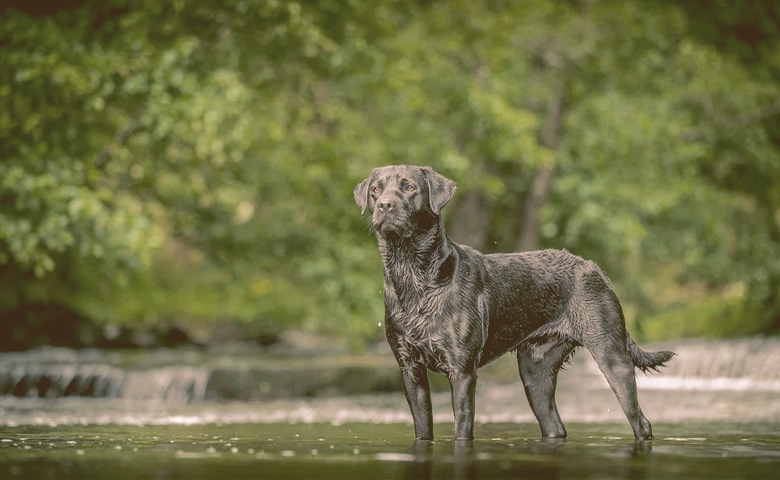
If this is the first time for your stud dog to mate, it may experience some jitters which may prevent the mating process. While it does happen, it helps to understand the options you have regarding breeding, both of which require your stud to make it happen.
Typically, female dogs are taken to the stud for breeding. The reason for this is the female needs to be as less reserved as possible. Most times, a new environment will allow a female dog the opportunity to be more free-spirited and enhance the natural breeding process.
If your stud is young and experiencing the mating process for the first time, expect the possibility of a mismatch between the two animals. If this happens, it may become possible that you, as the animal owner, will be required to assist in the mating process.
When pairing your immature stud with a partner, consider breeding him with a more experienced partner that has been through the process and bore a litter before. The female will be more patient as she knows what is about to happen.
Natural Breeding of Your Stud Dog
When breeding the natural way, your stud will instinctively attempt to mount from the rear for ejaculation. Once your stud discontinues thrusting, both dogs will be joined together in what is known as a locked tie.
A locked tie usually happens because of a swollen base section of your stud’s penis known as the bulbus glandis, and both the dam and your stud are joined together in a rear-to-rear position as copulation completes.
It gets a little awkward to view, as the pair might remain in this position for about ten to thirty minutes. It can be painful or harmful to your stud if the female decides to run away. As the stud owner, it is your responsibility to ensure both dogs remain in place until they can disengage.
Mating Your Stud Using Artificial Insemination
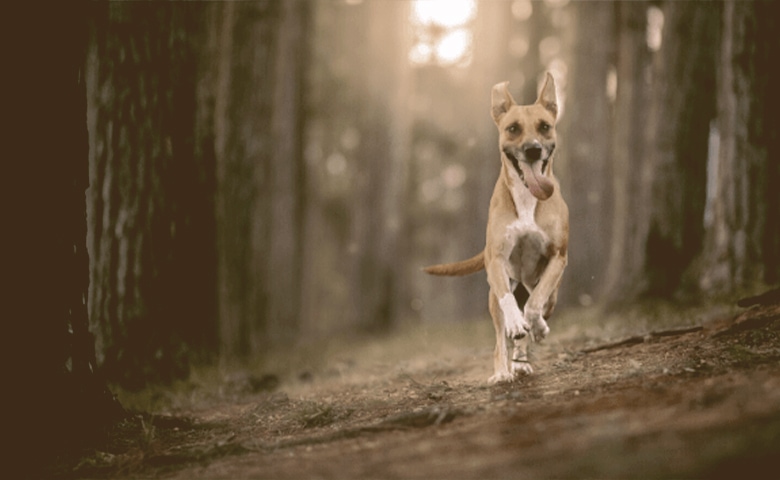
Although common, it may be a little disappointing if you are the stud dog owner and your dog seems unable to mate. Remember, your dog’s performance is contractually required to make pregnancy happen. Rather than offer a full refund, take heart; there are other means to mate your stud with a fertile female.
- Artificial insemination is a well-known and straightforward method for mating your stud and provides you a few advantages over natural mating methods.
- For the stud dog owner, using Artificial Insemination is a less expensive approach to providing stud services.
While your contract may have covered the costs of bringing the female dog to your stud, it needs to cover your stud’s semen being transported to the female dog using Artificial Insemination. Another benefit to this approach is that the female doesn’t end up stressed by frequent travel to and from your stud dog.
An advantage of the Artificial Insemination method of mating is that it lessens the potential for contraction or transmission of sexual diseases. By now, you are probably thinking that the entire process of mating your stud dog not only involves money but a lot of time, dedication, and hard work. It does, but you are just getting started.
The Stud Owner is the Responsible Party
If you did not choose the route of a professional breeder and have decided only to mate your stud dog, you still need to remember to do a few things. Whether your stud is a pure-blood breed or mixed, the stud owner still needs to be the responsible party during the mating process.
For pure-blood species, this means filling in all the paperwork and doing things the correct way. If there is a local Kennel Club nearby, it is up to you to register your stud. If there is no club nearby, you may have to file electronically. Either way, the responsibility to file is in your court.
You may have learned what your stud needs to do, but as the owner of a stud dog, again, it is up to you to act responsibly and closely supervise the coupling of the two animals during a mating session. It will be up to you to protect both dogs during the mating process.
As a stud owner, you need to be the one to help the dogs remain calm and keep them free from injury. Also, there will be times during the mating process you may need to hold the female in place as your stud dog attempts to mount.
Professional Breeder Needs After Mating
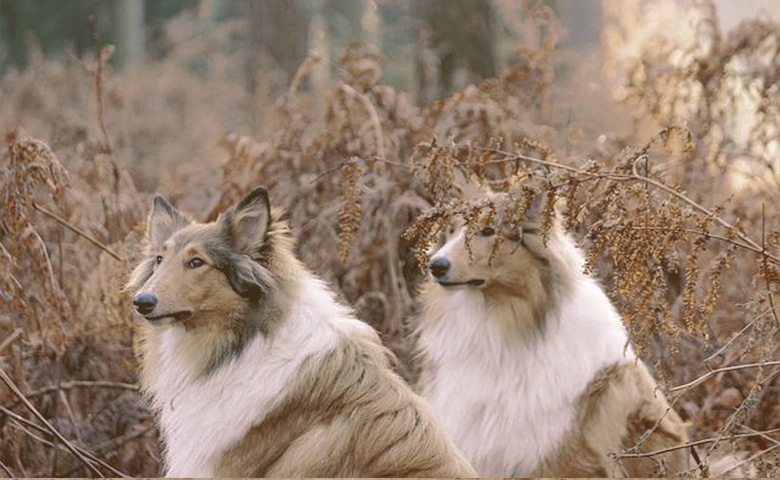
Suppose you choose to go the way of a professional dog breeder. There are quite a few things you will need to consider as you start your journey. Initially, there will be a financial investment. How much investment depends entirely on you.
On average, a breeder will spend from about one thousand three hundred dollars to about eight thousand two hundred dollars on their initial investment. These average costs do not include the price of a physical kennel if you choose to go that route.
You may want to start small and grow, but here are some essential items a beginner breeder will need if you choose to take the next step and become a full-scale provider of pups and stud services. Things a professional breeder needs are often non-exhaustive, but it is a safe bet you will use some or all of what’s listed below at some point.
- Iodine
- Whelp Box
- Scissors
- Heating pads
- Clean towels
- Rolls of paper towels
- Newspaper or suitable bedding
- Thermometers
- Gloves
- Scale
- Notebook
The expense for items a professional breeder requires does not stop with the above. Along with all the items listed, breeding your stud dog means continued trips to your veterinarian for wellness checks. Your sire needs to be in proper physical and mental condition before each breeding. You may also want to consider starting a kennel.
Once Your Stud Has Mated
If providing a stud service only, the responsibility of you and your stud dog is officially over when the female is pregnant. However, you need to keep in mind that as the stud owner, you must still be the responsible party. Your stud has done its duty, now you must do yours.
You need to be the one to inform the owner of the pregnant dog what to expect during pregnancy and birth. It is up to you as the stud dog’s owner to offer straightforward advice to the owner of the dog serviced. As the stud’s owner, you need to provide information about the birth process and care of the pups following the birth.
If you have never experienced the birth process, you need to take time to at least get a general understanding of how the entire process works. This is something you as the stud’s owner will need to convey to the dam’s owner. Also, it is especially important if part of your payment for mating your stud dog is one or two healthy puppies.
The gestation period for a female dog is usually about nine weeks or around sixty-three days. During this time, a dam’s owner will need to periodically check in with the mama dog and watch for signs of trouble. Let the owner know they need to focus on the visible fetus’s growth during the middle stage.
Delivering Your Stud Dog’s Offspring
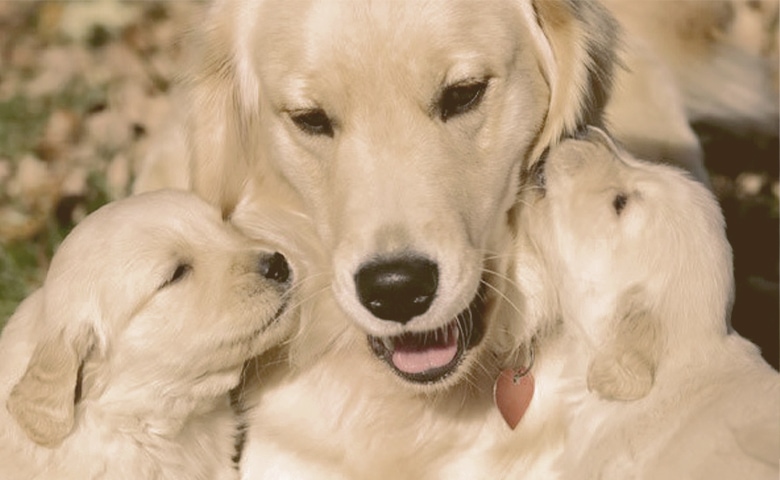
When it is time, the female dog will grow restless and will want to isolate herself from its owner or other dogs. The last hours before labor, the female dog will be off feed and heading to the Whelp, which you hope the female dog’s owner purchased and prepared in advance.
A sure sign that the dog is in labor is a marked decrease in rectal temperature. Once in delivery mode, the female dog will demonstrate three physical stages. All three may require the active participation of the owner. It is up to you to ensure the dam’s owner knows how to perform the steps and prepares for them in advance.
The delivery stage will take a bit, so the owner needs to remain patient. For smaller breeds, the average litter size is four to five. Larger dogs may produce six to eight pups. Regardless of the number, passing the placenta is the final stage and just as important and the others.
If the dam’s owner can afford to keep a veterinarian on retainer during these delivery stages, then great. If not, you need to ensure the owner is prepared for the unlikely scenario if or when the dog goes into distress and experiences birthing difficulties.
Let the dog’s owner know that it may become necessary to assist the dog with her delivery up to and including an emergency cesarean section if required and get the owner to discuss the process with a veterinarian in advance of the dog’s delivery.
Feeding the Stud Dog’s Pups
Immediately following a successful non-emergency birth, both the mother of the pups and the owner will get a few precious moments to rest. For the next few hours, the puppies will nurse. It is best not to interrupt this process as the pups receive Colostrum.
- Colostrum is also known as mother’s milk and is an enriched fluid created by the mother that helps the pups develop the immunities necessary to survive.
- As the stud dog owner, you must tell the dam’s owner to ensure the dog allows the puppies to feed.
If the mother of the pups does not feed the pups, the owner will need to step in immediately. Whether a puppy lives or dies depends on those first few hours. Instruct the female dog’s owner to keep a constant watch on the brood.
Should the mother not allow feeding, then the owner will need to bottle feed each pup with a specific nutrient-rich formula. If the puppies are too small to handle the nipples, then switch to a syringe.
Fading Puppy Syndrome
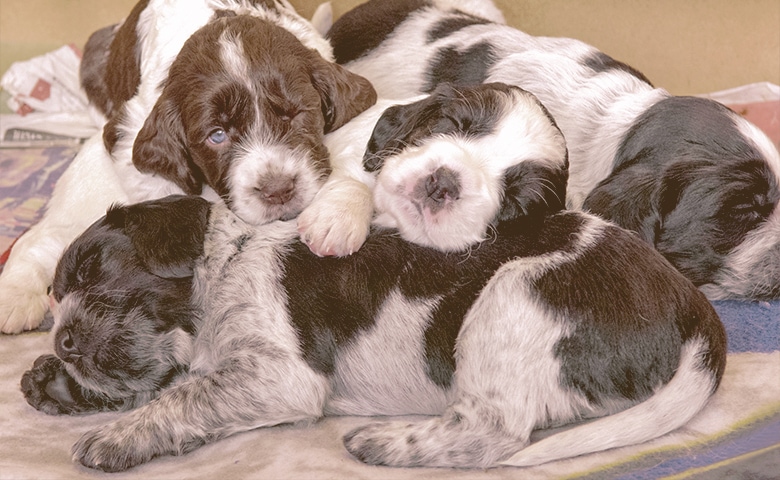
As a provider of dog stud services, something you should understand and relate to the dam’s owner is Fading Puppy Syndrome. While you have high hopes it won’t happen, you need to let the dog’s owner know what to expect if it does.
Essentially, Fading Puppy Syndrome is when a puppy appears normal at birth then dies anywhere from five to ten days later. What is surprising about this affliction is the puppies appear healthy and robust at birth. Then at some point, the puppies lose all interest in suckling.
As you now know, puppies must suckle Colostrum-enriched milk from their mother to strengthen their immune systems. Any puppy that loses interest or is too weak to nurse is immediately in harm’s way.
Let the female dog’s owner know and caution them to watch for signs that one or more pups have no interest in feeding. Tell them multiple force-feedings may help and that they should contact a veterinarian immediately if they suspect any puppies have this condition.
Initial Care of the Stud Dog’s Pups
As the pups grow, an owner will find themselves switching roles from being a dog owner to a combination of sanitation engineer, food and nutrition provider, and weights and measures specialist.
The female dog rarely moves to provide the pups with a stationary feeding platform. It will be up to the owner to help her with nourishment and water. It is also entirely the owner’s responsibility to weigh the puppies daily and record the sex of the pups and keep the climate at about eighty-six degrees Celsius.
If the pups seem sluggish and don’t move around much, then they are not warm enough. It may be that the owner can not keep the temperature at such a high degree because of the location of the Whelp. If that is the case, recommend using a heating pad or two. The puppies need to stay dry and warm to grow and get stronger.
Additionally, the owner needs to clean the Whelp daily. The tiny pups don’t know they can’t defecate on the newspapers in the Whelp, so it is up to the owner to keep the puppies’ temporary home free of disease and clean.
The Art of Mating Your Stud Dog
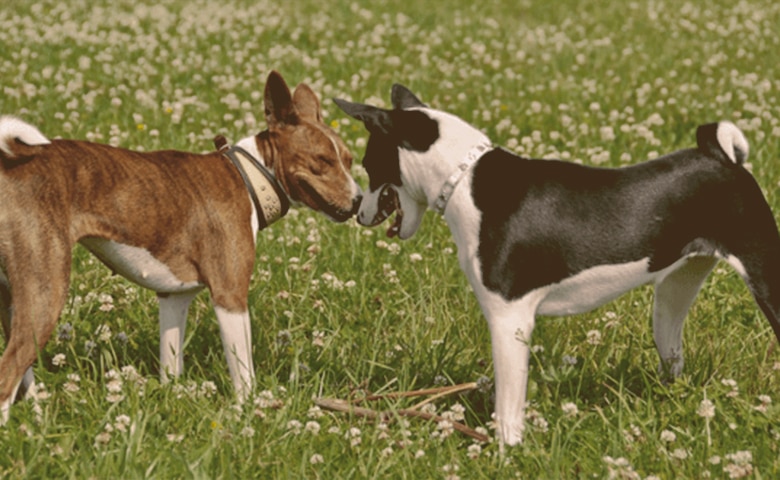
There are various reasons you may want to mate your stud dog. Whether it is for the money, to improve the breed, weed out deficiencies or produce a desired trait, the mating processes will remain the same.
It starts with a pair of certified healthy dogs, a formal contract, and over time, an intimate knowledge of genes and hereditary traits of the animals you are breeding. Also required is at least a reasonable understanding of the birth process and care and feeding of sire, dam, and the offspring.
When done well, mating your stud dog is an art form. However, the results can be quite different if you approach breeding your stud in a haphazard method. Before mating your stud dog it pays to investigate the entire process from the initial stud contract all the way through to the mating sessions and birth.
Understanding your responsibilities, learning to control the process, and providing the partner dog owner with valuable information they need will help ensure a pleasant dog mating experience.
Sources
Google
Royal Canin Breeder Club
ISWS
Breeder First Steps Club
Breeding Business

